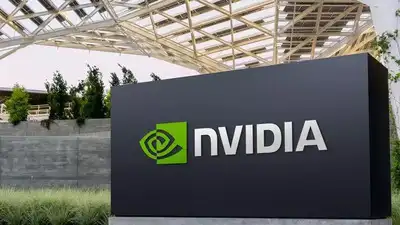In a strategic move to maintain its foothold in one of the world’s largest tech markets, NVIDIA is reportedly developing a new artificial intelligence chip specifically tailored for China. The chip, tentatively named B30A, is based on NVIDIA’s cutting-edge Blackwell architecture and is designed to outperform the current H20 model, which has faced regulatory hurdles and export restrictions in recent years.
This development comes at a time when U.S.-China relations remain strained, particularly around the issue of advanced semiconductor technology. With China accounting for approximately 13% of NVIDIA’s global revenue, the company’s efforts to craft a compliant yet powerful AI chip underscore the delicate balance between innovation, market access, and geopolitical constraints.
A Strategic Pivot: The B30A Chip
The B30A chip is expected to feature a single-die design, a departure from the dual-die configuration used in NVIDIA’s flagship B300 accelerator. While this design choice results in roughly half the raw computing power of the B300, it allows the chip to stay within the performance thresholds permitted under U.S. export regulations.
Despite the scaled-down architecture, the B30A will include several high-performance features such as high-bandwidth memory and NVLink technology, which enables fast data transmission between processors. These capabilities mirror those found in the H20 chip, but the B30A benefits from the more advanced Blackwell architecture, offering improved efficiency and scalability.
NVIDIA aims to deliver test samples to Chinese clients as early as next month, signaling an aggressive timeline for deployment and market validation.
Navigating Regulatory Waters
The development of the B30A is not just a technical endeavor—it’s a calculated response to evolving U.S. export controls. In 2023, the U.S. government imposed restrictions on the sale of high-performance AI chips to China, citing national security concerns. NVIDIA responded by creating the H20 chip, a modified version of its Hopper architecture-based products, specifically designed to comply with these restrictions.
However, sales of the H20 were abruptly halted earlier this year, prompting NVIDIA to reassess its strategy. The B30A represents a new chapter in this ongoing saga, offering a chip that is both technologically competitive and regulatory-compliant.
Recent comments from U.S. President Donald Trump suggest a potential softening of export policies, with indications that scaled-down versions of next-generation chips may be allowed for sale in China. Nevertheless, regulatory approval for the B30A remains uncertain, and the chip’s final specifications are still being refined to ensure compliance.
Market Dynamics and Competitive Pressures
NVIDIA’s decision to invest in a China-specific AI chip is also driven by competitive pressures. Chinese tech giant Huawei has made significant strides in developing its own AI chips, narrowing the performance gap with NVIDIA in certain areas. While Huawei’s chips are still considered inferior in terms of software support and memory bandwidth, their rapid progress poses a threat to NVIDIA’s dominance.
By offering a Blackwell-based chip that integrates seamlessly with its existing software ecosystem, NVIDIA aims to retain Chinese developers and prevent a wholesale shift to domestic alternatives. This strategy not only preserves market share but also reinforces the value of NVIDIA’s proprietary tools and platforms.
Moreover, the B30A is expected to be accompanied by another China-specific chip, the RTX6000D, designed primarily for AI inference tasks. This chip will feature conventional GDDR memory and reduced specifications to stay below U.S. export thresholds, further diversifying NVIDIA’s offerings in the region.
Technical Highlights of the B30A
While full specifications of the B30A are yet to be finalized, early reports suggest the following key features:
- Architecture: Blackwell-based, offering improved performance-per-watt and scalability.
- Design: Single-die configuration for regulatory compliance.
- Memory: High-bandwidth memory for efficient data handling.
- Interconnect: NVLink support for fast processor communication.
- Performance: Estimated to deliver 30–50% of the computing power of the B300 accelerator.
- Compatibility: Designed to work with NVIDIA’s existing software stack, including CUDA and TensorRT.
These features position the B30A as a mid-tier solution that balances performance with compliance, making it suitable for a wide range of AI applications, from natural language processing to computer vision.
The Geopolitical Context
The development of the B30A cannot be viewed in isolation—it is part of a broader narrative involving U.S.-China tech rivalry, export controls, and national security concerns. Lawmakers in Washington have expressed apprehension about allowing even scaled-down versions of advanced AI chips to be sold to China, fearing that such access could erode the U.S.’s technological edge.
On the other hand, industry leaders argue that maintaining engagement with Chinese firms is essential to global competitiveness. NVIDIA, in particular, has emphasized the importance of keeping Chinese developers within its ecosystem, warning that disengagement could lead to increased reliance on domestic alternatives like Huawei.
The recent agreement requiring NVIDIA and AMD to share 15% of revenue from certain chip sales in China with the U.S. government adds another layer of complexity. It reflects a growing trend of economic oversight and strategic bargaining in the semiconductor sector.
Looking Ahead
As NVIDIA prepares to launch the B30A, several questions remain unanswered. Will the chip receive the necessary regulatory approvals? Can it deliver sufficient performance to satisfy Chinese clients? And how will competitors respond?
What is clear, however, is that the B30A represents a strategic adaptation to a rapidly changing landscape. It embodies NVIDIA’s commitment to innovation, market responsiveness, and geopolitical awareness. By crafting a chip that meets both technical and regulatory demands, NVIDIA is not just preserving its presence in China—it’s redefining what it means to compete in a world where technology and politics are increasingly intertwined.
In the coming months, the rollout of the B30A will serve as a litmus test for the future of U.S.-China tech relations. For NVIDIA, success will depend not only on silicon and software but also on diplomacy, agility, and foresight.



